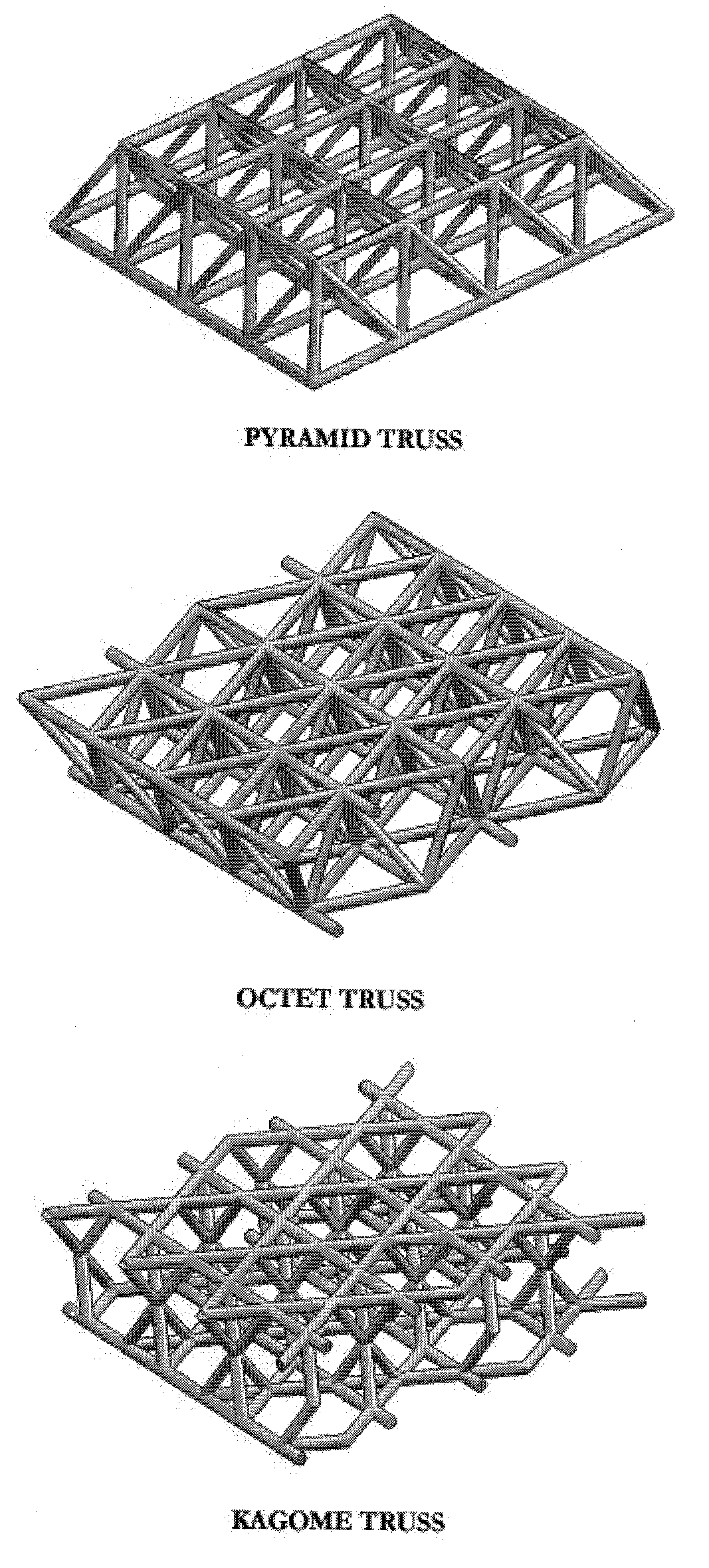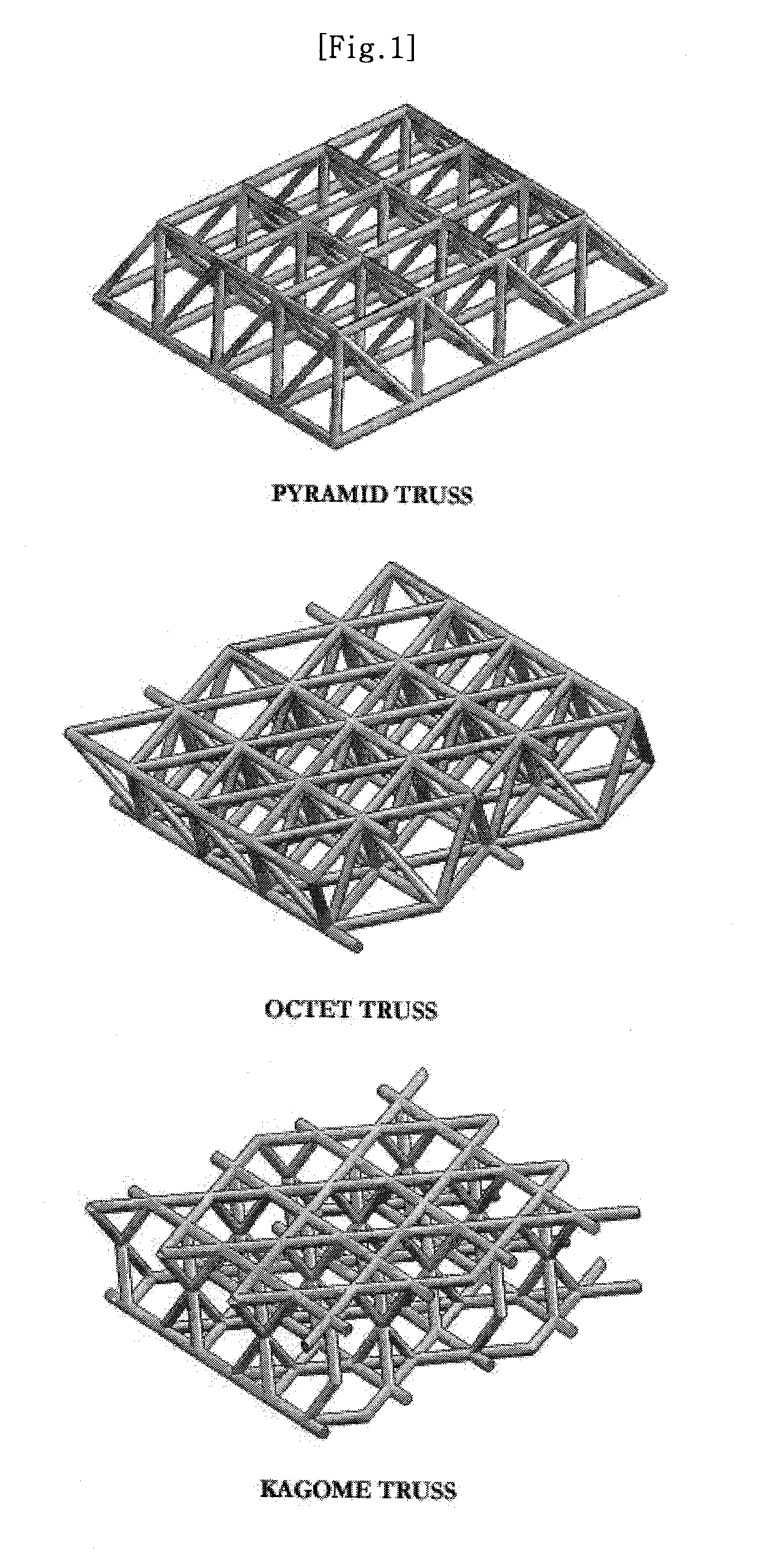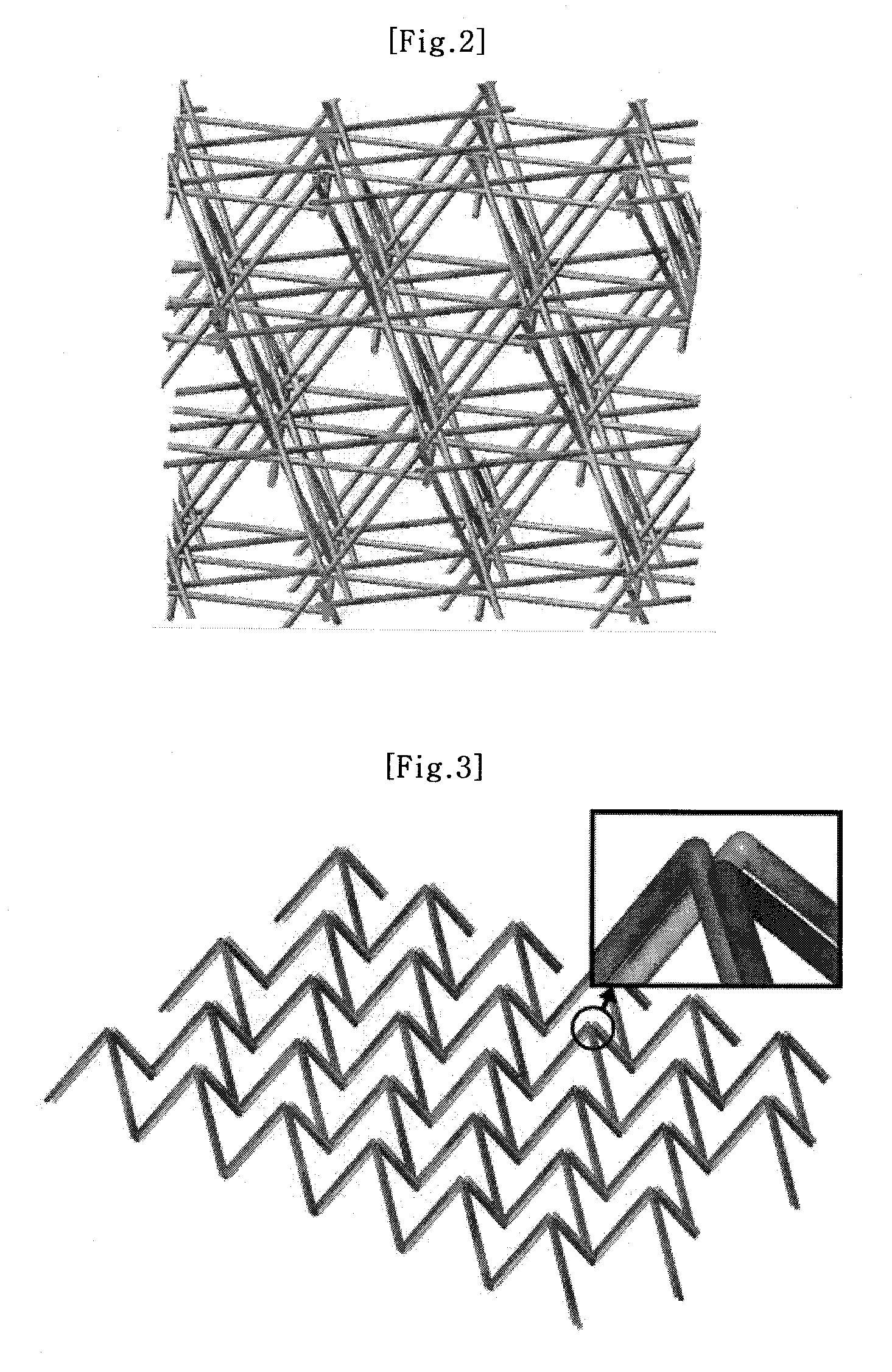Truss type periodic cellular materials having internal cells, some of which are filled with solid materials
a cellular material and internal cell technology, applied in the field of light cellular materials, can solve the problems of reducing the stability and damping capacity of deformation energy of truss elements, and preventing the strength of periodic materials. , to achieve the effect of preventing the strength of periodic materials, reducing the buckling of truss elements, and increasing the stability and damping capacity of deformation energy
- Summary
- Abstract
- Description
- Claims
- Application Information
AI Technical Summary
Benefits of technology
Problems solved by technology
Method used
Image
Examples
first embodiment
[0047]FIG. 7 is an exemplary perspective view illustrating regular hexagonal truss type cellular material, wherein parts of internal cells are filled with solid materials.
[0048]According to the first embodiment of FIG. 7, the internal cells 100 of which parts are selected alternatively one after another in the up, down, left and right direction are filled with the solid material 200.
[0049]Although the structural stability of a normal regular hexahedral truss is known as relatively low, the filled materials 200 according to the embodiment restrict all the truss elements so that the buckling of the truss elements themselves may be suppressed and that the structural stability of the whole cellular materials may be remarkably increased. Meanwhile, as quarter of the total internal cells is filled with solid materials, the porosity of the cellular material decreases in that degree.
[0050]As mentioned above, it is also preferable in this embodiment that the solid materials 200 filling part ...
second embodiment
[0051]FIG. 8 is an exemplary perspective view illustrating pyramid truss type cellular material, wherein parts of internal cells are filled with solid materials.
[0052]According to the second embodiment of FIG. 8, only the tetrahedral cells among the pyramid and tetrahedral cells 100 constructing the pyramid truss are filled with the solid materials 300.
[0053]Since all truss elements are constrained by the solid materials, the structural stability of the truss elements themselves and the whole cellular material is remarkably increased.
[0054]On the contrary, about ⅓ of the whole volume of all the internal cells 100 are filled with the solid materials 300 and thus the porosity thereof is reduced as much.
[0055]In this embodiment, the solid materials 300 filling part of the cells 100 may be selected from the group consisting of molten pastes for soldering or brazing, liquid synthetic resin or liquid metal as mentioned in the preceding embodiment.
third embodiment
[0056]FIG. 9 is an exemplary perspective view illustrating Octet truss type cellular material, wherein parts of internal cells are filled with solid materials.
[0057]According to the third embodiment of FIG. 9, only the tetrahedral cells among the regular octahedral cells and the tetrahedral cells 100 constructing the Octet truss are filled with the solid materials 400.
[0058]Since all truss elements are constrained by the solid materials 400, the structural stability of the truss elements themselves and the whole structure is remarkably increased.
[0059]On the contrary, about ⅓ of the whole volume of all the internal cells 100 are filled with the solid materials 400, and thus the porosity thereof is reduced as much. Also in this embodiment, the solid materials 400 filling part of the cells 100 may be selected from the group consisting of molten pastes for soldering or brazing, liquid synthetic resin or liquid metal as mentioned in the preceding embodiments, which are preferably insert...
PUM
| Property | Measurement | Unit |
|---|---|---|
| size | aaaaa | aaaaa |
| sizes | aaaaa | aaaaa |
| strength | aaaaa | aaaaa |
Abstract
Description
Claims
Application Information
 Login to View More
Login to View More - R&D
- Intellectual Property
- Life Sciences
- Materials
- Tech Scout
- Unparalleled Data Quality
- Higher Quality Content
- 60% Fewer Hallucinations
Browse by: Latest US Patents, China's latest patents, Technical Efficacy Thesaurus, Application Domain, Technology Topic, Popular Technical Reports.
© 2025 PatSnap. All rights reserved.Legal|Privacy policy|Modern Slavery Act Transparency Statement|Sitemap|About US| Contact US: help@patsnap.com



